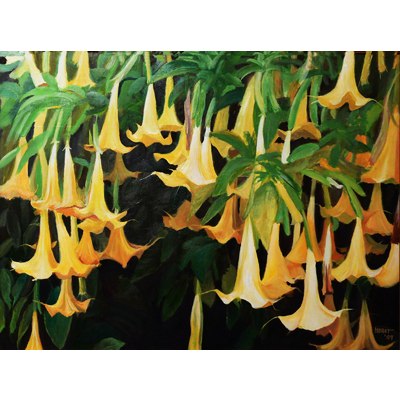The idea of ‘poisonous plants’ is shrouded in a bit of mystery. It’s all very well to come across the odd documentary film or magazine feature about poisonous plants in Australia, but are you really likely to come across one yourself? Are they really that common?
The trouble with poisonous plants is that we tend to associate them with exotic settings and difficult-to-reach places where average camping or caravanning tourists aren’t likely to venture into. When in fact, a number of these plants can actually be found right in your own garden! And when you’re out camping in unknown territory, you might not have access to the medical infrastructure that’s you can take for granted at home. As such, some prior knowledge about the region’s native toxic plants is an absolute must.
The following is a compilation of some of Australia’s most poisonous plants:
The Black Bean
The black bean earns the top spot on this list because of the high likelihood of its existence in your part of the country. With its large, innocent looking leaves, orchid-like flowers and large pods, it can appear quite harmless on sight. It is the pods, in fact, that you need to watch out for. More specifically, the seeds they contain. The black bean is native to New South Wales and Queensland, and crops up in moist soil, particularly on river banks and along coasts. Its toxic pods are around from March to May, and ingesting their seeds can cause diarrhoea and nausea, if not worse.
Angel’s Trumpets
This is a plant you won’t find in a remote corner of the bush. It is in fact a fairly common garden plant, and derives its name from its beautiful, billowing flowers in rich shades of red, orange and pink. Angel’s Trumpets can also deceive you with their pleasant fragrance, but ingesting their leaves and seeds will cause a whole world of trouble ranging from diarrhoea and migraines, all the way to paralysis and possible death.
The Oleander
Another garden-variety plant, this time with pretty white flowers (can also be pale pink or yellow) and long, slender leaves. All parts of this plant are toxic, and can often cause skin irritation from proximity or touch alone. Ingesting them would be fatal, particularly for children. Though the oleander has some inbuilt warning signs (such as bitter leaves that are actually difficult to eat), its extreme toxicity can get to you in other ways. For instance, burning it can create toxic fumes that should not be inhaled.
The Milky Mangrove
The word ‘milky’ here refers to the sap of this plant, and is the key to its toxicity. The sap can temporarily blind you if it comes in contact with your eyes, and can cause irritation and blistering of the skin. The Milky Mangrove is found in northern New South Wales, Queensland, Northern Territory and Western Australia. It naturally occurs in low-lying areas and in combination with other varieties of mangrove. It can range in size from a shrub to a 15m high tree, but its leaves will always be oval, with pointed tips and rounded bases. The plant can have surface roots, but the milky sap is its most characterising feature.
The Gympie Gympie:
A notorious member of the nettle family, the Gympie Gympie has also earned the title of the ‘giant stinging tree’. Native to the rainforests of Queensland, this large shrub has broad leaves with pointed tips, and stinging hairs all over its stems, leaves and fruits. These hairs carry an extremely toxic venom that can cause a range of conditions, from allergic reactions to excruciating pain for extended periods of time.
That’s certainly not all…
The above list was just the tip of the iceberg. Australia is home to a number of toxic plants that are fairly easy to chance upon. That said, your camping holiday doesn’t have to be ridden with anxiety! Like with everything else, the best way to protect yourself is to adopt the safe route: avoid contact with anything that you cannot identify. Wear protective clothing while venturing into unknown forests or bushy areas, and do not ingest any part of a strange plant, or use them as campfire fuel. Teach your kids to take the same precautions, and always accompany them on bushwalking expeditions. Last but not the least, be prepared with antihistamines, basic first aid, and most importantly, information on the nearest hospital, doctors surgery or pharmacy.
DISCLAIMER* Please note, this advice is general in nature and we strongly recommend consulting the product manual and where relevant, a professional installer.







